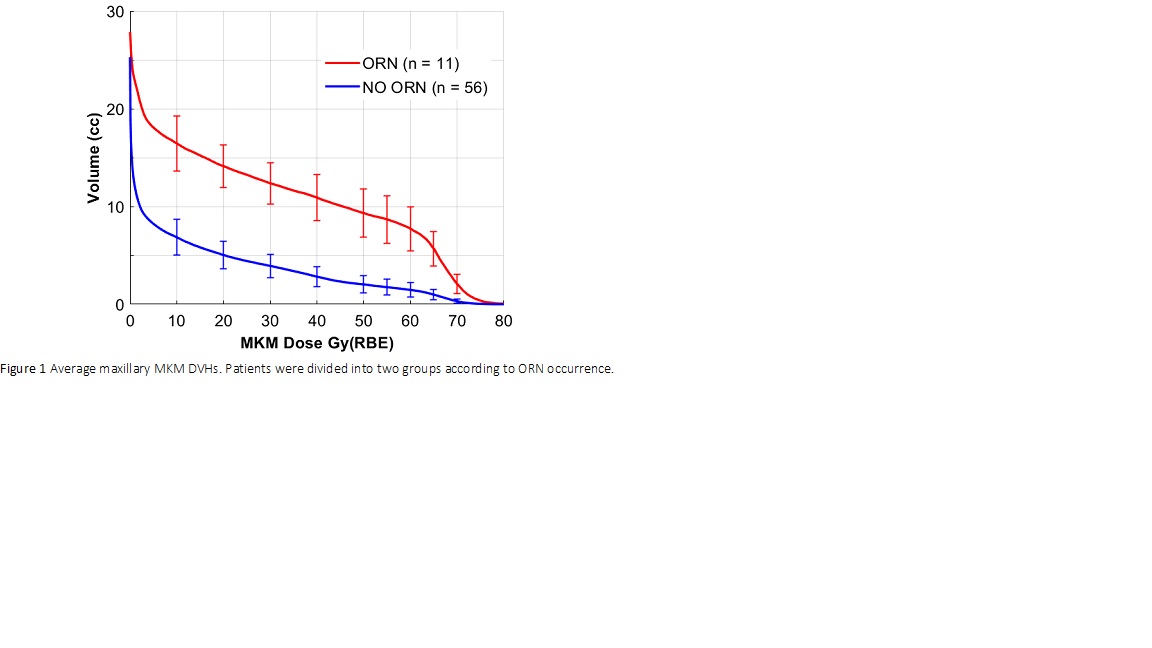Risk factors for the development of maxillary osteoradionecrosis in ACC patients treated with CIRT
PD-0828
Abstract
Risk factors for the development of maxillary osteoradionecrosis in ACC patients treated with CIRT
Authors: Barbara Vischioni1, Stefania Russo1, Martino Meuli1, Sara Ronchi1, Rossana Ingargiola1, Alexandra Ferent2, Sara Imparato3, Lorenzo Preda4, Mario Ciocca2, Maria Bonora2, Silvia Molinelli2, Ester Orlandi2
1CNAO National Center for Oncological Hadrontherapy, Clinical Depatment, Pavia, Italy; 2CNAO National Center for Oncological Hadrontherapy, Clinical Department, Pavia, Italy; 3CNAO National Center for Oncological Hadrontherapy, Radiology Department, Pavia, Italy; 4San Matteo Hospital, Radiology Department, Pavia, Italy
Show Affiliations
Hide Affiliations
Purpose or Objective
The
present study aims to evaluate dosimetric and clinical risk factors for the
development of maxillary osteoradionecrosis (ORN) in head and neck adenoid
cystic carcinoma (ACC) patients treated with carbon ion radiotherapy (CIRT).
Material and Methods
Clinical
data and treatment plans of ACC patients, consecutively treated from January
2013 to October 2016 within the phase II clinical trial CNAO S9/2012/C, were
retrospectively reviewed. ORN and other treatment-related toxicities were
graded according to the Common Terminology Criteria for Adverse Events (CTACE)
scale. The maxillary bone was contoured on the planning CT, and only patients
receiving more than 10% of the prescription dose at their maxilla were
considered for the analysis (67 patients). The volumes of maxilla receiving
doses from 10 Gy (RBE) to 60 Gy (RBE) (VD), with an increment of 10
Gy (RBE), and additional clinical factors were correlated to the incidence of
ORN with univariate analysis (Chi-square test). The Cox regression model was
subsequently applied for multivariate analysis. Treatment plans calculated with
a local effect model (LEM) –based optimization were recalculated with the modified
microdosimetric kinetic model (MKM), and compared with literature data from the
Japanese experience.
Results
The
median time interval from the start of CIRT to ORN appearance was 24 months
(range, 8 - 48 months). Maxillary ORN was observed in 11 patients (16%). Grade
1 ORN was observed in 2 patients (18%), G2 in 3 (27%), G3 in 4 (36%) and G4 in
2 patients (18%). At univariate analysis, the presence of maxillary elements
within the PTV and acute mucositis correlated with the development of maxillary
ORN. VD were significantly higher for all dose levels tested in
patients with maxillary ORN than in patients without (Figure1), according to
both radiobiological models. At multivariate analysis V50 significantly correlated
with ORN.

Conclusion
The volume of maxilla irradiated
with high dose values was relevant for the ORN development in our ACC patients’
cohort. These results were in line with the previously published data obtained
with a different radiobiological model. Our finding might be helpful to prevent
ORN risk in patients receiving CIRT.